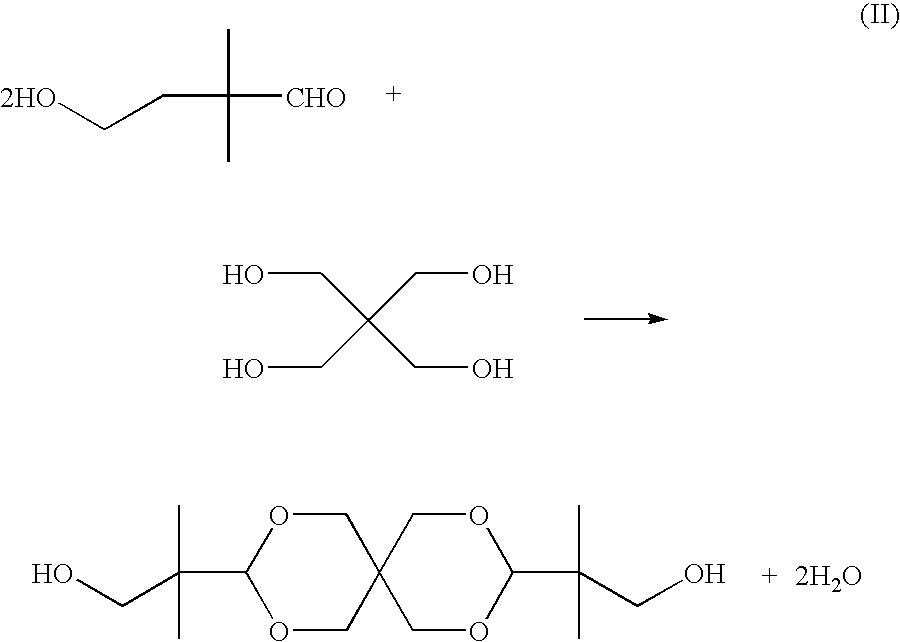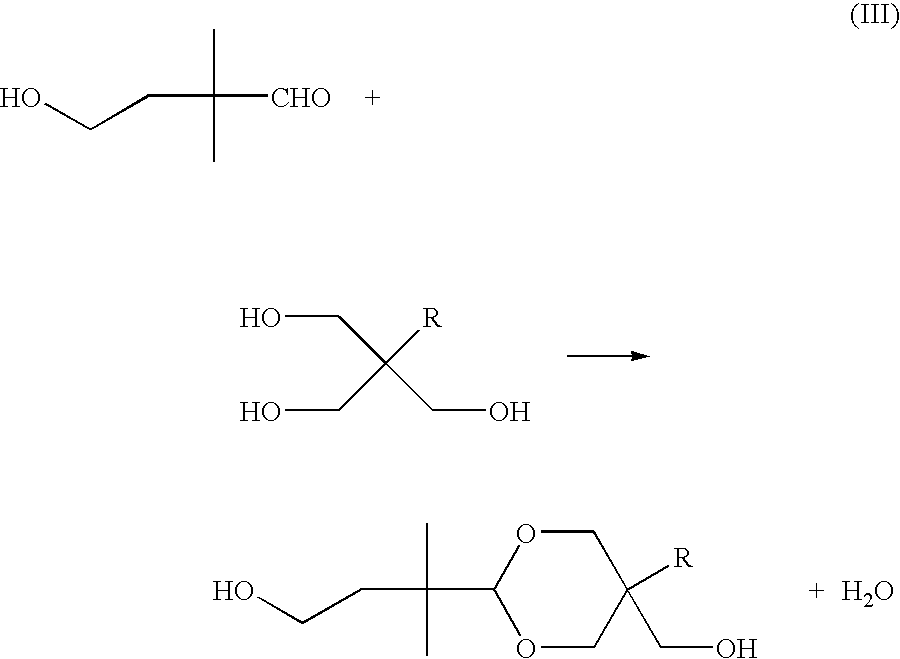Polyester compositions which comprise spiro-glycol, cyclohexanedimethanol, and terephthalic acid
a technology of polyethylene and terephthalic acid, which is applied in the field of polyethylene compositions made from terephthalic acid, can solve the problems of whitening of parts, high heat resistance, and use in molded cups and bowls, and achieves good color, good clarity, and reduced pct crystallization rate
- Summary
- Abstract
- Description
- Claims
- Application Information
AI Technical Summary
Benefits of technology
Problems solved by technology
Method used
Image
Examples
example 1
[0172]This example illustrates the preparation of a polyester containing 100 mole % terephthalic acid, 36 mole % spiro-glycol, and 64 mole % 1,4-cyclohexanedimethanol (70 / 30 trans / cis). A mixture of 58.2 g (0.30 mol) dimethyl terephthalate, 33.9 g of 1,4-cyclohexanedimethanol (0.24 mol), 28.7 g of spiro-glycol (0.09 mol), and 50 ppm Ti based on titanium tetra-isopropoxide was placed in a 500 milliliter flask equipped with an inlet for nitrogen, a metal stirrer, and a short distillation column. The flask was placed in a Wood's metal bath already heated to 220° C. and the contents of the flask were heated at 220° C. for 1.5 hours, then heated to 290° C. over 1 hour. Once at 290° C., a vacuum of 0.3 mm was gradually applied over the next 10 minutes. Full vacuum was maintained for a total time of about 20 minutes to remove excess unreacted diols and build melt viscosity. A high melt viscosity, clear, colorless polymer was obtained with a glass transition temperature of 110° C. and an in...
example 2
[0173]This example illustrates the preparation of a polyester containing 100 mole % terephthalic acid, 26 mole % spiro-glycol, 32 mole % 2,2,4,4-tetramethyl-1,3-cyclobutanediol (60 / 40 cis / trans), and 42 mole % 1,4-cyclohexanedimethanol (70 / 30 trans / cis). A mixture of 62.1 g (0.32 mol) dimethyl terephthalate, 22.3 g (0.16 mol) of 2,2,4,4-tetramethyl-1,3-cyclobutanediol, 19.4 g (0.13 mol) of 1,4-cyclohexanedimethanol, and 30.1 g of spiro-glycol (0.1 mol), 200 ppm Sn based on butyltin tris(2-ethyl-hexanoate) and 30 ppm P based on triphenylphosphate was placed in a 500 milliliter flask equipped with an inlet for nitrogen, a metal stirrer, and a short distillation column. The flask was placed in a Wood's metal bath already heated to 200° C. and the contents of the flask were heated at 200° C. to 210° C. for 1 hour, then heated to 220° C. over 1 hour, and then to 275° C. over 1.5 hours. Once at 275° C., a vacuum of 0.3 mm was gradually applied over the next 10 minutes. Full vacuum was mai...
PUM
| Property | Measurement | Unit |
|---|---|---|
| molecular weight distribution | aaaaa | aaaaa |
| Tg | aaaaa | aaaaa |
| Tg | aaaaa | aaaaa |
Abstract
Description
Claims
Application Information
 Login to View More
Login to View More - R&D
- Intellectual Property
- Life Sciences
- Materials
- Tech Scout
- Unparalleled Data Quality
- Higher Quality Content
- 60% Fewer Hallucinations
Browse by: Latest US Patents, China's latest patents, Technical Efficacy Thesaurus, Application Domain, Technology Topic, Popular Technical Reports.
© 2025 PatSnap. All rights reserved.Legal|Privacy policy|Modern Slavery Act Transparency Statement|Sitemap|About US| Contact US: help@patsnap.com



